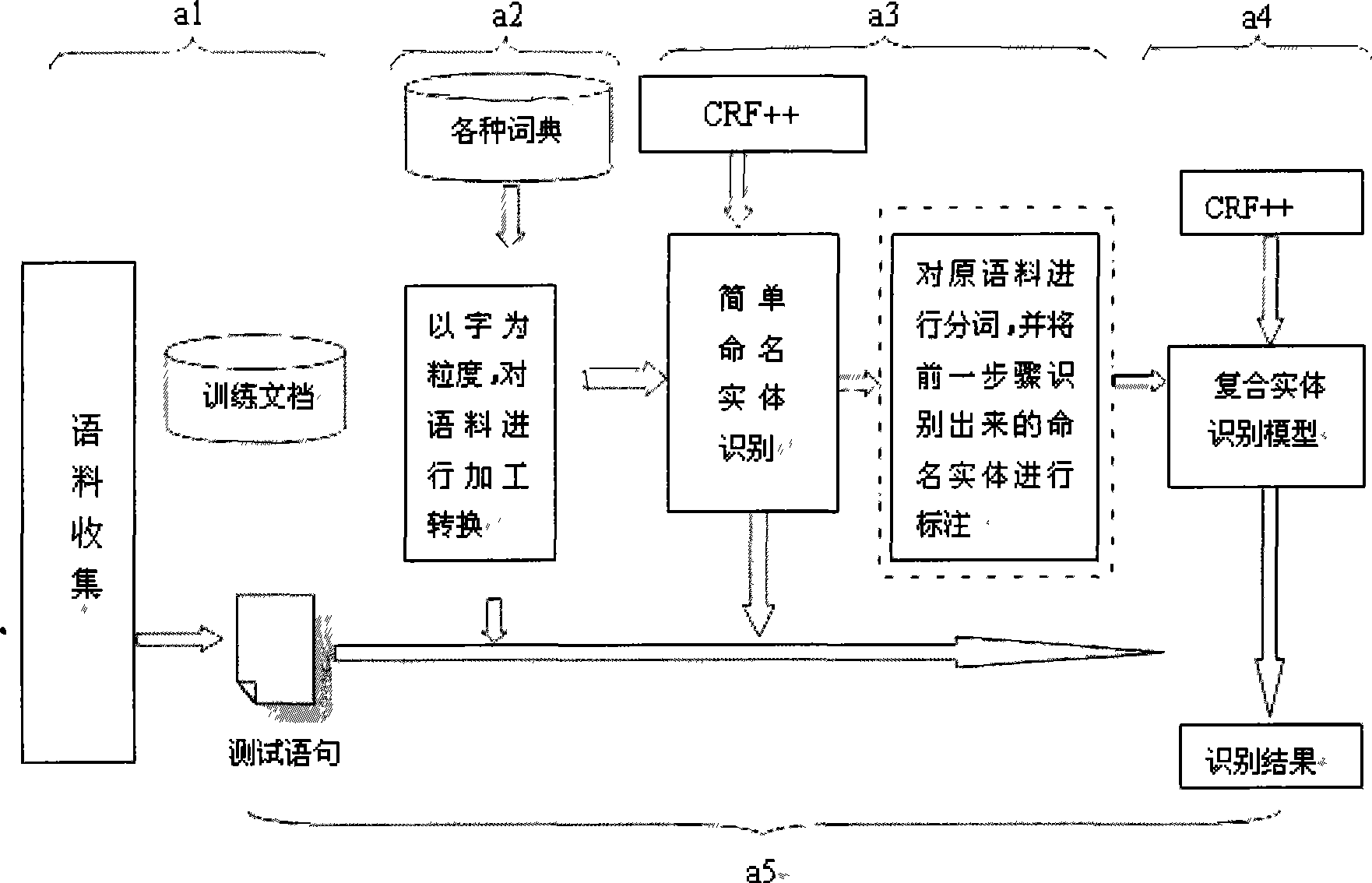Tour field named entity recognition method based on condition random field
A named entity recognition, conditional random field technology, applied in special data processing applications, instruments, electrical digital data processing, etc., can solve problems such as adverse effects
- Summary
- Abstract
- Description
- Claims
- Application Information
AI Technical Summary
Problems solved by technology
Method used
Image
Examples
Embodiment Construction
[0039] This embodiment takes the field of Yunnan tourism training and testing as the text, and collects and sorts it out. Experimental verification was carried out in the field of Yunnan tourism for the proposed method above. The specific steps are as follows: figure 1 shown.
[0040] Step a1. Manually collect 2000 Yunnan tourism document corpus. Among them, 800 articles are training corpus, and 1200 articles are open test corpus. 600 of the 800 training documents are randomly selected as the closed test corpus. The so-called training corpus refers to the text provided to the CRF++0.49 toolkit to extract context features from it. The training model refers to the collection of contextual features extracted from the training corpus. The test corpus refers to the corpus used to verify the performance of the training model. That is, unmarked text. Open testing means that the training corpus and test corpus are not repeated. Closed testing means that the test corpus is part...
PUM
 Login to View More
Login to View More Abstract
Description
Claims
Application Information
 Login to View More
Login to View More - R&D
- Intellectual Property
- Life Sciences
- Materials
- Tech Scout
- Unparalleled Data Quality
- Higher Quality Content
- 60% Fewer Hallucinations
Browse by: Latest US Patents, China's latest patents, Technical Efficacy Thesaurus, Application Domain, Technology Topic, Popular Technical Reports.
© 2025 PatSnap. All rights reserved.Legal|Privacy policy|Modern Slavery Act Transparency Statement|Sitemap|About US| Contact US: help@patsnap.com



